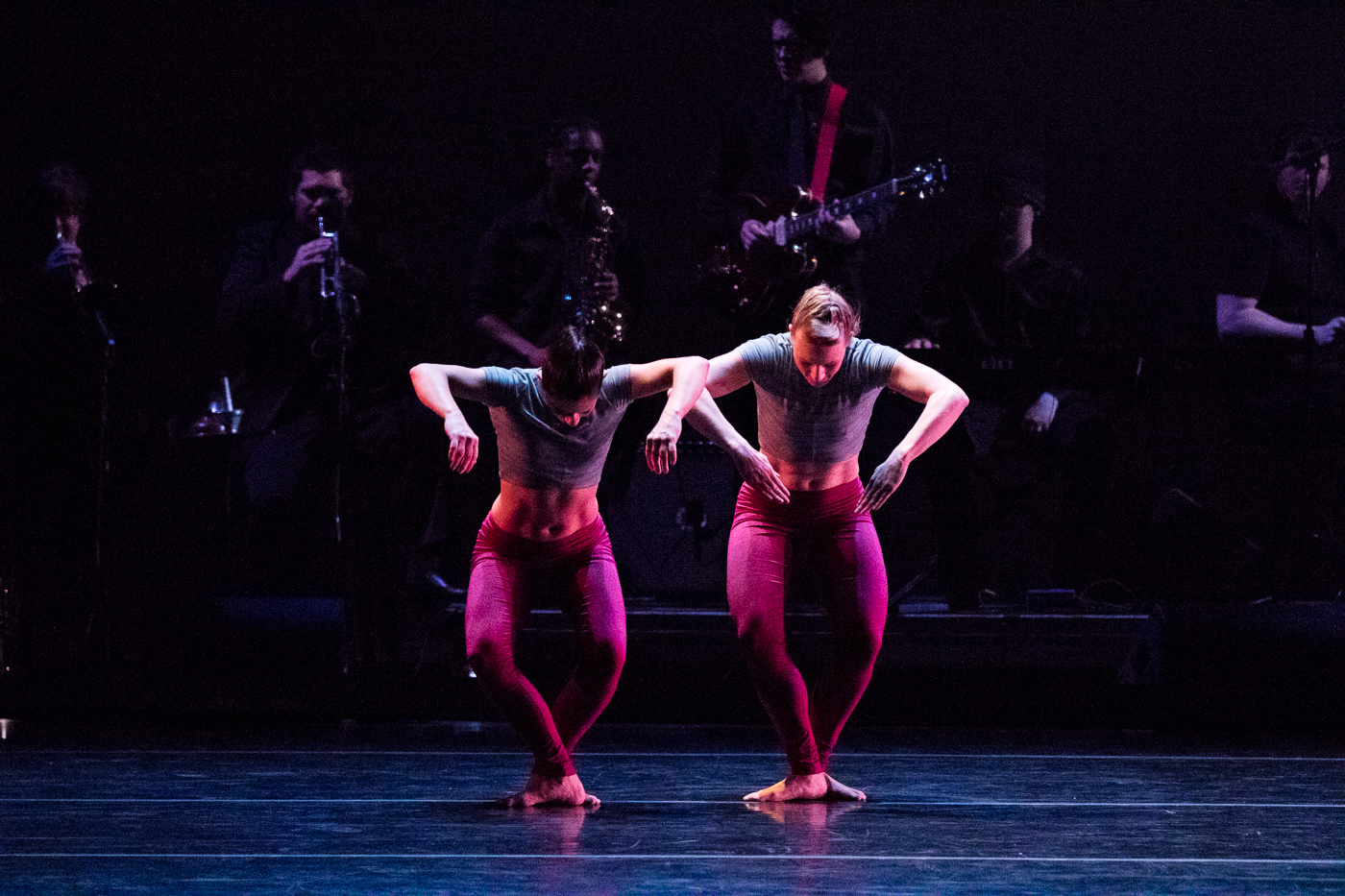
– By Cate Marquis –
Dance St. Louis’ New Dance Horizons at Touhill honors Black History Month
Every year for the past four, Dance St. Louis, the dance presenting organization, has brought an innovative dance concept to the Blanche M. Touhill Performing Arts Center. New Dance Horizons commissions new works from renowned choreographers which are then performed by local dance troupes. Usually, New Dance Horizons takes place in fall, but this year Dance St. Louis moved it to February, and commissioned works from three African-American choreographers, works to honor famous black St. Louisans for Black History Month.
On February 26 and 27, MADCO, Big Muddy Dance Company, and a new group, Dance St. Louis Dance Ensemble, premiered works by choreographers Bebe Miller, Robert Moses and Dianne McIntyre on the Touhill stage. The theater was nearly packed the evening of Friday, Feb. 26, as Dance St. Louis’ artistic director Michael Uthoff introduced the program. The performance was followed by a brief question and answer session with the choreographers, all of whom attended.
The first piece danced was “Line Up Low Down,” Miller’s homage to Miles Davis, followed by “Gunshots/Daffodils/Moans/Still,” Moses’ nod to a variety of St. Louis individuals, including Rev. Cleophus Robinson, Dick Gregory, bluesmen Henry Townsend, Albert King, Roosevelt Sykes and Walter Davis. McIntyre chose to honor poet Maya Angelou, with her dance “When We Come To It.”
The dancers of MADCO performed “Line Up Low Down” to selections of Davis’ jazz compositions. A group of musicians played on stage behind the dancers, who were dressed in non-matching costumes, as if at rehearsal. Their casual style perfectly suited the cool jazz music, and dancers matched the pace of their jazz-style dancing to the sounds. Overall, the dance was loose, even sometimes random. Improvisation is a big part of jazz, and the piece include dancers’ improv in its choreography. Generally, dance is performed to music but this piece included several sections where the dancers performed without music, where the only sounds were the dancers’ feet hitting the stage, panting and grunts of exertion. Dancing without music is a bit like “breaking the fourth wall” in theater, something that can be effective if used sparingly, but this piece had four of them, which seemed a bit excessive.
After a short intermission, the Big Muddy Dance Company performed “Gunshots/Daffodils/Moans/Still,” to a blues score. In sync with the blues music, the dancers mixes jazz moves with pop dance ones, ranging from energetic to playful. The dance’s title suggests contrasts – restlessness and stillness, peacefulness and violence – which was reflected in the choreography. In a nice creative touch, strips of bubble wrap were placed on stage, which popped as the dancers tread on them. Near the dance’s end, stacks of bubble wrap were placed at one end of the stage. As the dancers stepped on to them one-by-one, random pops were heard, a single one or several, at which the dancer flinched as if shot. Assisted to the opposite side, they laid down side-by-side. It was a powerful visual metaphor for victims of random gun violence.
In the final, most elaborately-staged and polished piece, Dance St. Louis Dance Ensemble danced “When We Come To It.” The troupe was specially created for the performance and was led by three principle dancers, Alicia Graf Mack, and Antonio and Kirven Douthit-Boyd, who are all veterans of the Alvin Ailey dance troupe. The trio were clad in white, backed by dancers in beige, and danced before a woman in a long dress and perched on a high ladder, who recited selection of Angelou’s poetry set to music. The dance was fluid, graceful and beautiful, matching the dramatic reading of the poems. The effect was hypnotic and inspiring.
Overall, the program was a fitting way to mark Black History Month in St. Louis.
© Cate Marquis / The Current
